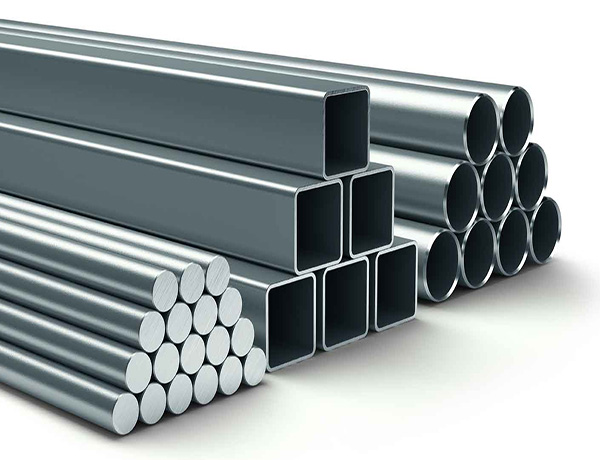Effect Of Various Elements On The Properties Of Steel Materials
The elements that are intentionally added during the smelting process in order to improve and improve certain properties of the steel and to achieve certain special properties are called alloying elements. Commonly used alloying elements are chromium, nickel, molybdenum, tungsten, vanadium, titanium, niobium, zirconium, cobalt, silicon, manganese, aluminum, copper, boron, rare earth and the like. The following small series will introduce to you what the various elements in the steel represent and what effect it has on the steel.

1. C element
The C element is the most important alloying element in steel materials. C exists in the steel material in the form of interstitial solid solution or carbide.
Generally, according to the content of C element, the steel can be divided into low carbon steel (containing less than 0.25% C), medium carbon steel (containing C content 0.25%-0.6%), high carbon steel (containing C amount greater than 0.6%). When the C content is less than or equal to 100 ppm, it can generally be subdivided into ultra-low carbon steel.
Generally speaking, in steel, the higher the C content, the higher the strength and hardness of the steel, but the plasticity and toughness will also decrease. Conversely, the lower the C content, the higher the plasticity and toughness of the steel. The hardness will also decrease.
2. Si element
Si is mainly used as a reducing agent and a deoxidizer in the steel making process. When the content is more than 0.5%, it can be considered as an alloying element, which can significantly increase the yield strength and yield ratio of the steel. When Si exceeds 3%, the steel is significantly lowered. The ductility and toughness increase the ductile-brittle transition temperature of the steel.
When the Si content is high, it is easy to produce red iron skin on the surface of the hot rolled strip, and subsequent pickling is difficult to clean. And the higher Si content will improve the corrosion resistance of the steel and reduce the coating properties of the steel.
3. Mn element
Mn can be infinitely miscible with Fe, and is mainly present in the steel material in a displacement solid solution manner. It is one of the main strengthening elements in steel materials. Adding Mn can improve the strength and hardness of steel, and improving the "hardenability" of steel is one of the important strengthening elements in high strength steel. Mn can form a high melting point MnS with S in steel smelting, thereby weakening and eliminating the adverse effects of S.
4. S element
In general, S is a harmful element in steel. When steel with high sulfur content is subjected to pressure processing at high temperature, it is easily brittle and is usually called hot brittleness. The higher the sulfur content, the more severe the hot brittleness phenomenon, so the sulfur content in the steel must be controlled. General high-quality steel: S<0.02%-0.03%; high-quality steel: S<0.03%-0.045%; ordinary steel: S<0.055%-0.7% or less. Sulfur can reduce the strength of steel, so it is good for steel cutting, but it is rarely used except for easy-cut steel.
5. P element
P element is also a harmful element in steel, and P can significantly reduce the plasticity and toughness of steel, especially at low temperatures. At the same time, P is the strongest element that strengthens ferrite. Therefore, some steel grades use a small amount of P to increase the strength of the material. P is used in combination with copper to improve the atmospheric corrosion resistance of steel.
6. Al element
In general, Al is a useful element in steel materials and is mainly used as a deoxidizer. At present, most of the low carbon steel products use Al as a deoxidizer. As a strong oxidant, Al can form highly fine-grained, ultra-microscopic oxides that prevent grain growth and grain refinement when the steel is heated. As an alloying element, it contributes to the nitriding of steel, thereby improving the thermal stability of steel, and Al itself has high stability upon heating. Generally, the Al content in low carbon steel is 0.02-0.1%.
7. Nb, Ti, V elements
Nb, Ti, and V in the steel mainly form fine dispersed carbides to refine the grains, and at the same time, the carbides will strongly hinder the dislocation slip when the steel is deformed, thereby greatly increasing the yield strength of the material. Generally, Nb, Ti, V and other microalloying elements are added to low-alloy high-strength steel. The characteristics of such steels are higher yield under low carbon equivalent, high yield ratio, stable forming and small rebound, and general reaming rate. Higher, but formable.
8. Cr, Mo elements
Cr is a medium carbide forming element. Among all the various carbides, chromium carbide is the finest one, which is evenly distributed in the steel volume, so it has high strength, hardness, yield point and high resistance. Grinding. Plasticity and toughness are also good because it enables the organization to be refined and evenly distributed. The addition of Mo element can refine the grain and improve the tempering stability of martensite. The combination with Cr and Ni can greatly improve the hardenability and improve the toughness.
